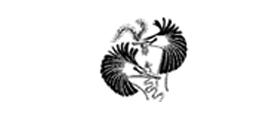- View more resources from this publisher
 Association for the Study of Animal Behaviour (ASAB)
Association for the Study of Animal Behaviour (ASAB)
Vigilance Behaviour in Barnacle Geese
This resource looks at the vigilance behaviour of barnacle geese grazing in winter. Throughout the winter young geese learn where best to feed and how to survive by foraging with their family groups. When an individual is foraging it has to balance the risk of feeding with the risk of possible predation. Gathering in flocks to feed gives an earlier warning of the approach of a suspected predator. Students investigate whether vigilance changes as a function of flock size and what other factors are likely to influence the behaviour of an individual, including social status, foraging efficiency and peripheral predation.
Through the activity, students consider the importance of defined categories of behaviour whilst recording the frequency and duration of defined behaviours. After a brief introduction to the migration of barnacle geese, the film shows twenty one sequences of one minute duration in which students must score the frequency and duration of ‘head-up’ (vigilant) postures in a target goose. The exercise highlights the trade-off between feeding and vigilance and the advantage of group feeding in reducing vigilance costs.
This resource was provided by the Association for the Study of Animal Behaviour (ASAB).
Show health and safety information
Please be aware that resources have been published on the website in the form that they were originally supplied. This means that procedures reflect general practice and standards applicable at the time resources were produced and cannot be assumed to be acceptable today. Website users are fully responsible for ensuring that any activity, including practical work, which they carry out is in accordance with current regulations related to health and safety and that an appropriate risk assessment has been carried out.
Downloads
-
Vigilance behaviour in barnacle geese 244.51 KB




